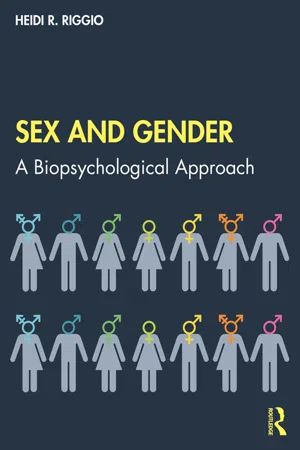Biological Sciences
Alleles
Alleles are different forms of a gene that can occupy the same position, or locus, on a chromosome. They can vary in their DNA sequence and can result in different traits, such as eye color or blood type. Alleles are inherited from each parent and can be dominant or recessive, influencing the expression of specific traits in an organism.
Written by Perlego with AI-assistance
Related key terms
4 Key excerpts on "Alleles"
- eBook - ePub
- Gershon Tenenbaum, Robert C. Eklund(Authors)
- 2020(Publication Date)
- Wiley(Publisher)
loci) in a chromosome. Humans are diploid organisms because they have two pairs of homologue chromosomes, and therefore two Alleles at each genetic locus, with one allele inherited from each parent. Each pair of Alleles represents the genotype of a specific gene. Genotypes are described as homozygous if the two Alleles are identical and as heterozygous if the two Alleles differ. Alleles contribute to the organism’s phenotype, which is the outward appearance of a trait. Some Alleles are dominant or recessive. When an organism is heterozygous at a specific locus and carries one dominant and one recessive allele, the organism expresses the dominant phenotype.Genes direct the production of proteins with the assistance of enzymes and messenger molecules. The messenger molecule consists of ribonucleic acid (RNA), configured as a single. The messenger RNA (mRNA) is produced by “transcription.” The mRNA travels out of the nucleus and into the cell’s cytoplasm, where the mRNA is read by ribosomes and directs the specific linking of various amino acids in the right order to form a specific protein, in a procedure called “translation” (see Figure 5.3 ). Proteins make up body structures, control chemical reactions, and carry signals between cells. If a cell’s DNA is mutated, an abnormal protein or abnormal protein levels may be produced and alter physiological or psychological processes (Sharp, 2009 ; van der Gulik & Speijer, 2015 ).Chromosomes, genes, DNA.Figure 5.2Summary of protein synthesis.Figure 5.3Adapted from https://commons.wikimedia.org/wiki/File:0328_Transcription‐translation_Summary.jpgFree for use By OpenStax [CC BY 4.0 (http://creativecommons.org/licenses/by/4.0 )], via Wikimedia Commons.Heritability of Performance‐Related Traits
Heritability—Its Role in the “Nature Versus Nurture” Debate
The “nature versus nurture” debate refers to a central question in biology about whether observed variation in a particular trait is due to the influence of learning and other environmental factors or due to biological/genetic predispositions.Humans differ one from the other in many ways: coloring, body shape and size, physical abilities, mental abilities, and others. Some of these differences have a normal distribution (e.g., height, intelligence), while others might have different distribution patterns. The sources of human variability are divided into two broad categories: environmental differences and genetic variation. Genetic variation describes naturally occurring genetic differences among individuals of the same species. Unless they are genetically identical (e.g., monozygotic twins in humans), individuals in a population tend to differ genetically one from each other. - eBook - ePub
Sex and Gender
A Biopsychological Approach
- Heidi R. Riggio(Author)
- 2020(Publication Date)
- Routledge(Publisher)
We have already defined some of these terms in Chapter 2 ; here, we will use slightly different definitions, to fit in the context of this chapter. Chromosomes are organized protein structures that contain genes; they are located within the nucleus of every cell. Human beings have 23 pairs of chromosomes, 23 inherited from their mother, 23 inherited from their father. The pairs of chromosomes are called homologous because they are similar in length, number of genes they carry, and gene location on the chromosome. A gene is a locus (or region) of DNA on a chromosome that encodes a cell function or protein product. Genes are the molecular units of heredity; they contain recipes for protein production within certain kinds of cells, proteins that affect human growth, appearance, functions of the body, and daily physiology. Because chromosomes occur in pairs, genes occur in pairs as well. An allele is an alternative form of a gene having the same position (locus) on a pair of chromosomes. Because we inherit one chromosome in each pair from each parent, we inherit different Alleles of the same gene from each of our parents. Sometimes Alleles are what is called dominant ; the existence of one allele always leads to the expression of trait, regardless of the other allele. In other words, possessing that allele affects a person’s phenotype, or the physical expression of a trait. Sometimes Alleles are recessive ; multiple copies of the allele must be present for the trait to be expressed, for the phenotype to be affected. The particular combination of Alleles one actually possesses is called a genotype ; the phenotype is how the genotype is physically expressed, either in appearance, in body function, in physiology, or in behavior. If a person possesses one of each type of allele (one dominant and one recessive), the person is said to be heterozygous for the trait, and the dominant trait will be expressed - eBook - ePub
Comparative Psychology
Evolution and Development of Brain and Behavior, 3rd Edition
- Mauricio R Papini(Author)
- 2020(Publication Date)
- Routledge(Publisher)
genes, which are nothing more than sections of the DNA molecule contained in the chromosomes. The fact that genes maintain their identity across generations is one major mechanism for the preservation of genetic variation.Germ cells (sperm and egg cells) contain a single copy of each chromosome and, therefore, a single copy of each gene (a condition known as haploid). Two copies of each chromosome and gene are produced after fertilization (a condition known as diploid). Chromosomes that contain the same (or very similar) sequence of DNA bases are said to be homologous. Different versions of homologous genes (same locus in homologous chromosomes) are called Alleles. Alleles are produced by mutations that alter the sequence of bases in the DNA molecule. In any given organism, there might be up to two Alleles for each gene, but in a population, it is possible to find more than two Alleles for a particular gene.Mendelian genetics can be illustrated with a simple example. Mendel collected seeds from garden peas that had consistently produced either round (R) or wrinkled (r) peas. R and r represent alternative phenotypes that, because of the consistency with which they are produced, can be assumed to be each under the control of a pair of identical genes. This condition, known as homozygous, is usually represented as RR or rr. Two homozygous plants in the parental population, P, can be crossed by fertilizing R eggs with r pollen. Mendel showed that such a cross yields plants that produce only R peas. This first filial generation is labeled F1. However, if now F1 plants are crossed with each other, the peas produced by plants from the F2 generation will be a mixture of R and r, with a precise distribution: 3R:1r - eBook - ePub
Biosocial Criminology
New Directions in Theory and Research
- Anthony Walsh, Kevin M. Beaver(Authors)
- 2008(Publication Date)
- Routledge(Publisher)
Alleles. When there are at least two Alleles that can be inherited for a gene, the gene is called a genetic polymorphism. The genes that determine eye color, for example, would be considered polymorphisms because they vary from person to person and this genetic variation corresponds to variation in eye color. Most Alleles, however, are not functionally different from one another and all Alleles of a genetic polymorphism code for the synthesis of the same protein. But for some polymorphisms different Alleles can code for the production of different proteins or for the production of nonfunctioning or suboptimal proteins.To help explain in greater clarity the inheritance of Alleles, an example using a hypothetical gene that determines temper will next be presented. Before proceeding, it is important to note that in reality multiple genes interact with each other and with the environment to create most phenotypes, including temper. For ease of presentation, however, let us pretend that one gene determines temper. Suppose that there are two different Alleles for the hypothetical temper gene, where A = the bad temper allele and a = the no-temper allele. Let us also suppose that the mother has Aa for the bad temper gene (i.e., one bad temper allele and one no-temper allele) and the father has AA for the bad temper gene (i.e., two bad temper Alleles). Any offspring produced by this pair of mates has the opportunity to inherit one of two different combinations of Alleles: AA or Aa (the ordering of Alleles is unimportant so aA and Aa are the same). In the case of AA, the offspring would have a bad temper because they inherited two bad temper Alleles whereas if they had inherited Aa they would have a moderate temper. Note that the other allelic arrangement of aa is not possible because the father’s bad temper gene has two bad temper Alleles (i.e., AA). When polymorphic genes are made up of the same allele, such as AA in this example, the gene is said to be homozygous. When polymorphic genes are made up two different Alleles, such as Aa
Learn about this page
Index pages curate the most relevant extracts from our library of academic textbooks. They’ve been created using an in-house natural language model (NLM), each adding context and meaning to key research topics.



